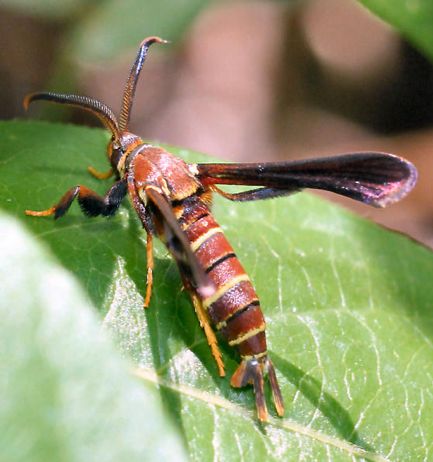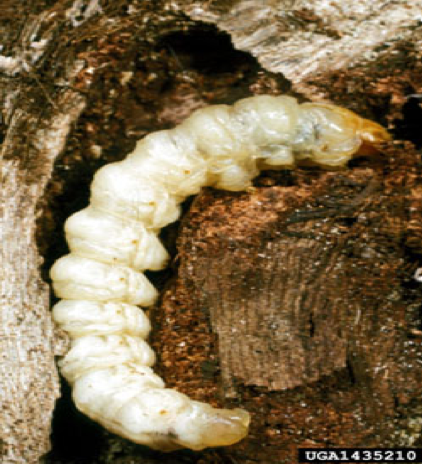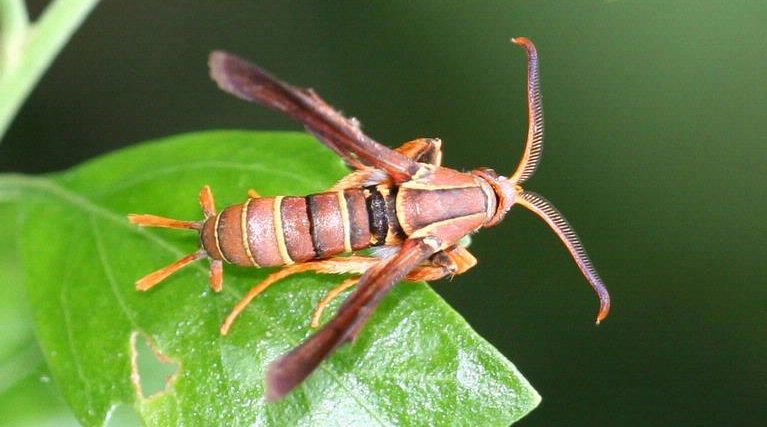Crop Production


Grape root borer adult. Photo by Buckeye Apellation, OSU.
The grape root borer is found throughout the eastern United States—from Pennsylvania to Ohio, but it is much more prevalent in southern states. It is a serious threat to grapes in Alabama vineyards.
Characteristics
Adults are brown moths with thin yellow bands on the abdomen and resemble some paper wasps. The front wings are brown while hind wings are transparent. Many “look-a-like” moths resemble grape root borers (Vitacea polistiformis), making this a difficult pest to monitor. Male grape root borers are characterized by the unique presence of four pencil-like tufts on the tip of the abdomen.
Symptoms
The most damaging stage of grape root borer is the larva. The eggs hatch on the soil surface and the larvae tunnels into the root system. Infested roots contain tunnels filled with reddish, sawdust-like frass (excrement), and trunks may be girdled. As with many wood-boring pests, damage may not be evident for several years. Once detected, it is often too late to control this pest. Symptoms include yellowing of leaves, smaller leaves and berries, reduced shoot growth, vine dieback, and reduced yield. Damage ranges from just a few feeding sites to complete root destruction. Diagnosing grape root borer is difficult because these symptoms can also be related to pathogens and environmental conditions. Complete diagnosis includes digging up symptomatic vines and inspecting the roots and/or monitoring for the presence of pupal skins around the base of the vine.

Grape root borer larvae. Photo by James Solomon, USDA Forest Service, Bugwood.org.
Management
Cultural methods for control of grape root borer include mounding soil under vines just after pupation in order to reduce adult emergence. If growers find any pupal skins on the soil around the base of the vines, cover the pupae with 6 inches of soil, which effectively aborts emergence.
Two species of Heterorhabditis bacteriophora nematodes have shown promise as biological control agents against grape root borer larvae. Pheromone-baited traps are recommended for monitoring adult moths. These traps should be placed about 100 m apart inside the vineyard and along adjacent woodland boundaries. Monitoring information may be useful for proper timing of insecticide applications. It is critical to have insecticides applied on the soil surface at the time of egg hatch. Once larvae reach the root system insecticides are ineffective.
For more detailed management options for bunch grapes, check out the 2023 Southeast Regional Bunch Grape Integrated Management Guide.
For more detailed management options for muscadine grapes, check out the 2023 Southeast Regional Muscadine Grape Integrated Management Guide.
Featured image by Johnny N. Dell, Bugwood.org.

